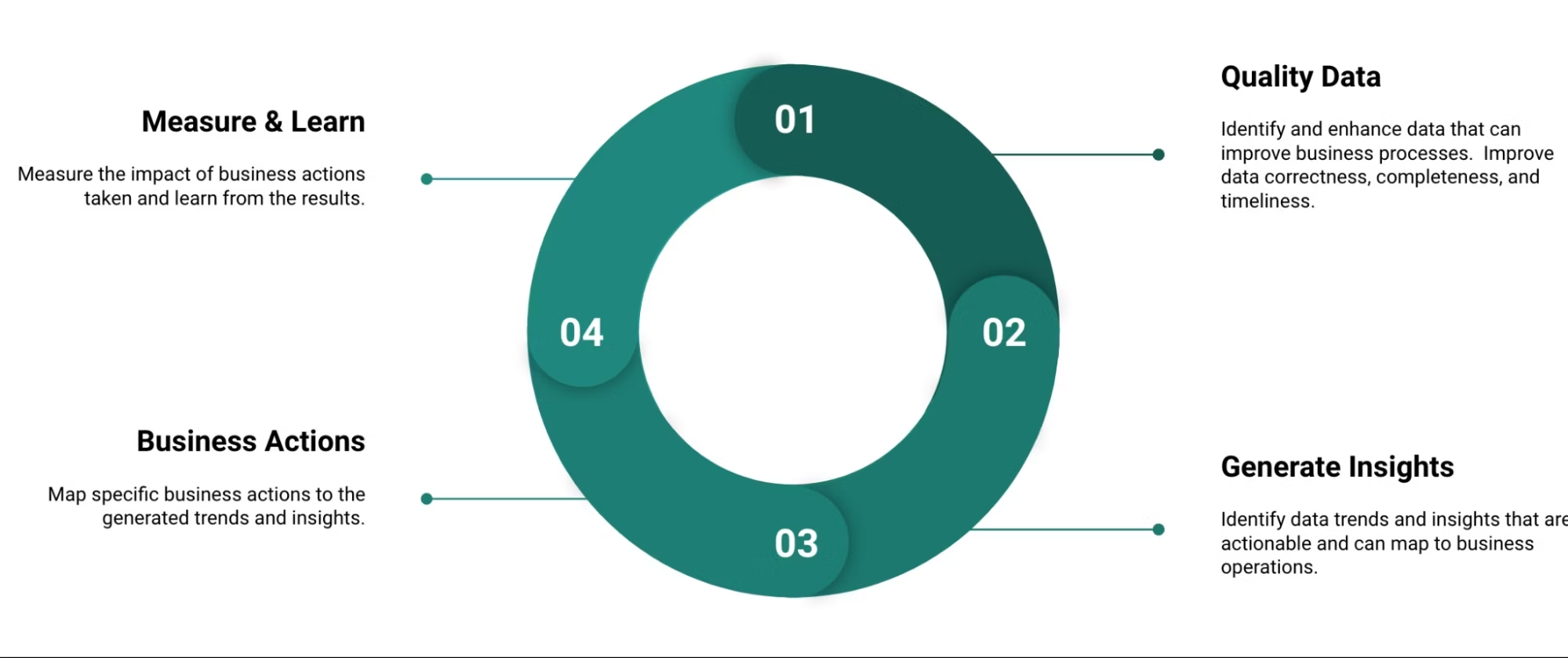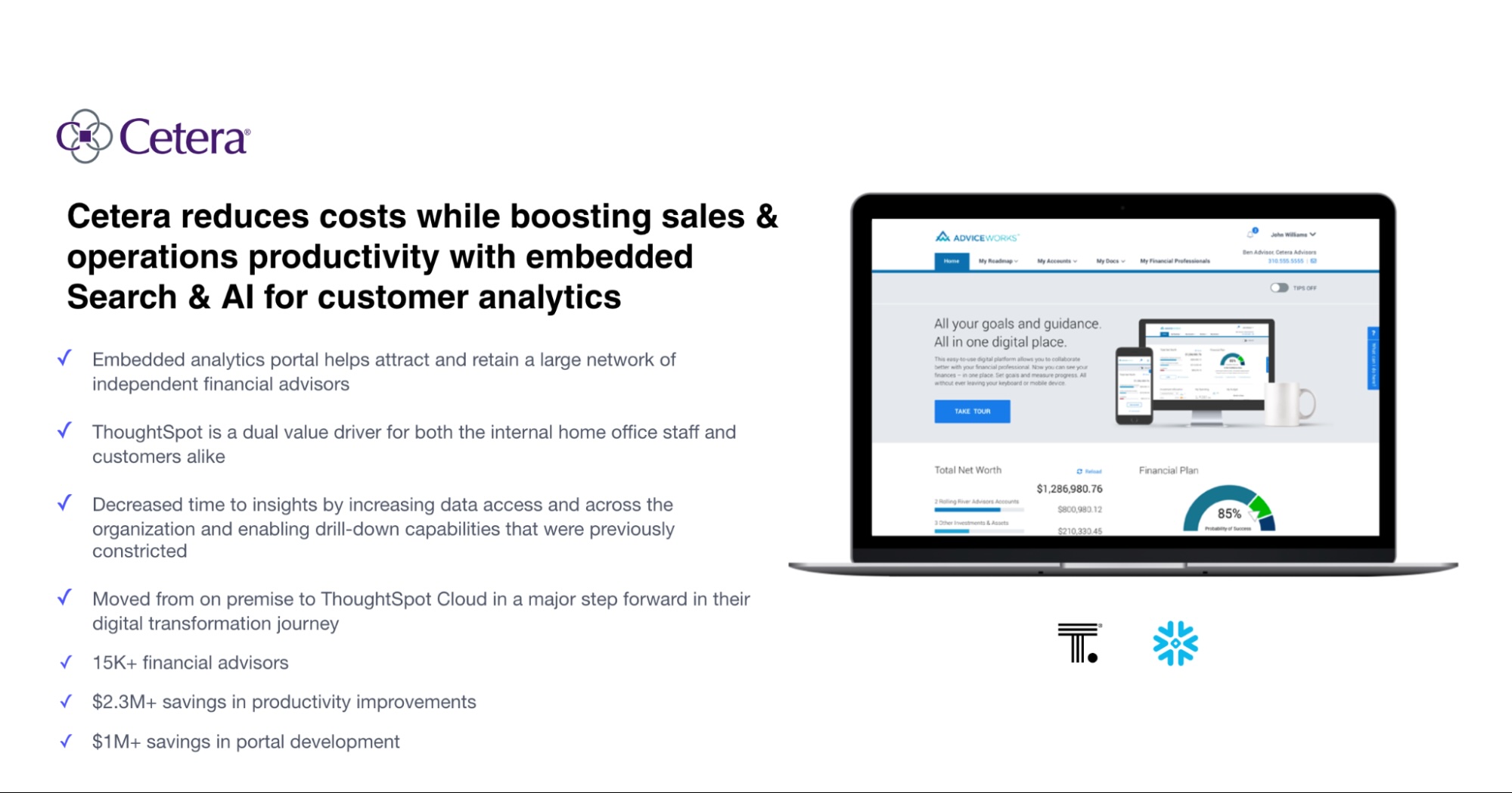Data is often described with cliches like, it's "the new oil" or “the new air.” No matter how you describe it, there is no denying the increasing importance of data monetization across every industry.
Forward-thinking organizations recognize data apps as both a revenue stream and a differentiated service to increase customer loyalty. In fact, 44% of surveyed businesses said that revenue would be positively impacted by embedding analytics in their app or product, and another 43% say it will have a positive impact on engagement and retention—and that’s just one aspect of data monetization.
Which begs the question, what exactly is data monetization? During this article, we’ll define what it means to monetize your data, examine ethical considerations, understand core components, and explore some practical applications. By the end, you’ll understand why and how organizations realize the true financial potential of their data assets.
What is data monetization?
Data monetization is succinctly described as “the generation of financial returns from data assets” by Barb Wixom in her book, "Data is Everyone’s Business." Wixcom goes on to emphasize the universal value of data across multiple sectors. Gartner expands on this, defining data monetization as the process of using data to obtain quantifiable economic benefits.
Here’s what that looks like in the real world: Your organization is creating more and more data every day, usually as a byproduct of your core operations—sales transactions, marketing operations, order fulfillment, logistics, and shipping just to name a few. By taking the data created from these real-world processes and turning it into positive impacts on the bottom line, you are monetizing data. The impact can be expressed by generating revenue, reducing expenses, or lowering risks.
Despite its potential, the term "data monetization" stirs controversy among some stakeholders. Consider, for instance, a healthcare company. They might be hesitant to use the term data monetization based on the appearance that they are generating revenue from private healthcare data—when in reality, they are using their data to reduce expenses or lower risk, not to generate revenue.
This is why I sometimes use the term “value realization” in place of “data monetization.” I invite you to substitute whichever term best applies to your situation.
Core components of data monetization
For effective data monetization, organizations must focus on three core components:
Improving data quality
Identifying valuable insights
Translating these insights into business actions
Whether you are using data and insights internally or externally, your ability to execute across these core concepts is critical to successful value realization and data monetization.
Realizing value from data: 3 different models
1. Insights flywheel
The first model is what I call the insights flywheel; it’s the implementation of those core components listed above. Essentially, you are enhancing the data while ensuring quality, creating valuable insights that align with key business practices, and identifying the actions that can be taken to achieve the goal. Your goal could be increasing speed to market, decreasing customer churn, or optimizing your supply chain—like on-time-in-full delivery (OTIF).

The insights flywheel model is foundational to most back-office and enterprise functions within an organization. It is the default model used by most companies to improve operational efficiency and decision-making, yet many find it difficult to attribute the data to insights and then to business outcomes. This is a sure sign that core components are not well executed.
XactWare, a division of Verisk, knows how to turn the insights flywheel. Their insights enable insurance companies to reduce the claims cycle time from 6 months to 2 weeks. They needed the ability to extend their insights and expertise to their thousands of customers.
Are there identifiable and actionable insights in your data that will improve operational efficiency for your organization? How about actionable insights for your customers? If so, you are ready to put the insights flywheel to work and start realizing value.
2. Embedded Analytics
Another method is Embedded Analytics 2.0, which integrates low-code, self-service analytics directly into an organization’s online portals and customer-facing products. Utilizing data to drive product improvements, enhance employee, customer, and partner portals, and offer personalized services works to boost customer loyalty and strengthen your competitive edge. It opens up the opportunity to realize value by increasing retention (effectively increasing sales), licensing new and existing services, decreasing expenses, and creating a recurring revenue stream.

Companies like Cetera Financial Group reduced costs while boosting sales and operations productivity by embedding ThoughtSpot Everywhere into their product. By bringing analytics to their financial advisors through an AI-infused portal, Cetera saved $2.3 million annually and an estimated $1 million in savings on technology operations costs.
3. Commercialization
The final method is directly selling the data, which is oftentimes called commercialization. This isn’t a new concept—in fact, companies have long sold their data directly. In this model, each data provider processes the data, packages it into products, handles pricing and billing, and implements multiple distribution channels. Your data products can then be packaged as raw data, refined insights, or data mash-up services.
Modern cloud data marketplaces provided by companies like Google Cloud, Snowflake, and Databricks offer a new way to package data products. This new model offers subscription services, allows you to share data without transferring the bits, and provides associated billing services.
The London Stock Exchange Group (LSEG) utilizes Snowflake's Financial Services Data Cloud. Showcasing a commercial approach to data monetization, LSEG sells its Quantitative Analytics (QA) data along with an additional 60 data products on the platform.
Relevant read: Get creative ideas about how to commercialize your data
Should your organization monetize data?
In essence, every organization should consider monetizing its data; remember, value realization will be on a spectrum—from turning the insights flywheel to embedding analytics in products or portals to outright selling data insights. Which data monetization strategy you choose will vary significantly depending on the overall business strategy.
Pro tip: Decisions should flow down from your business strategy to the digital strategy and onto the data strategy—only then should a monetization strategy be selected. Taking this approach will ensure your data monetization strategy is aligned with the business.
As you plan out your data monetization strategy:
Consider how monetization aligns with your overall business, digital, and data strategy.
Have you already built the insights flywheel muscle? If not, where do you need to mature?
Who are you trying to reach: external customers, internal employees, partners, agents, or distributors?
Does your data warehouse or lake have hidden insights for your audience?
Consider embedding analytics to reduce churn and create a competitive advantage in your product, allowing yourself some time to build revenue-generating operations.
Use a business value assessment or monetization calculator to model potential.
Strive to understand the needs of the users’ experience and ensure that you account for self-service, personalization, scalability, extensibility, and multimodal access via the web, mobile, and conversational AI.
As you navigate the complexities of data monetization, it's crucial to weigh the financial benefits against ethical and privacy concerns, ensuring that customer trust remains intact. By carefully selecting a data monetization model that aligns with organizational values and customer expectations, businesses can unlock the true potential of their data assets, fostering innovation and driving economic benefits in the digital age.
Interested in embedding analytics into your product? See how ThoughtSpot Embedded Analytics can help. Save your seat for an upcoming live weekly demo.








